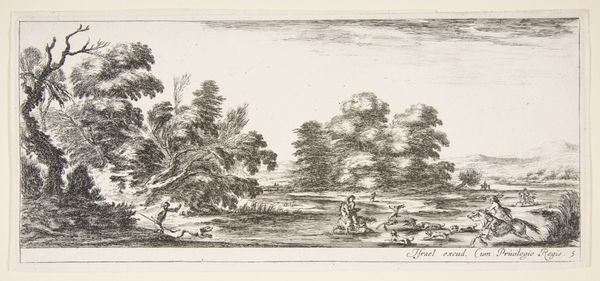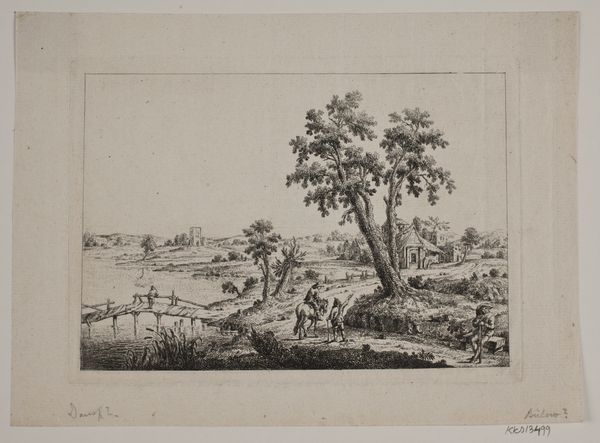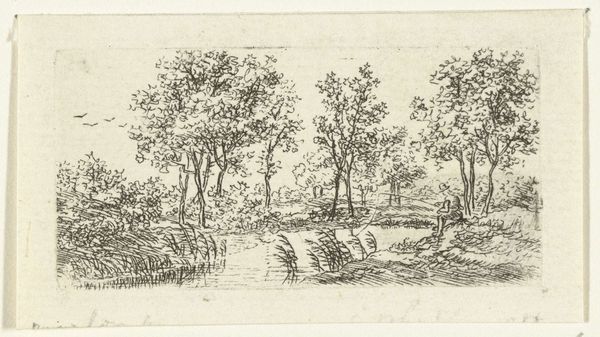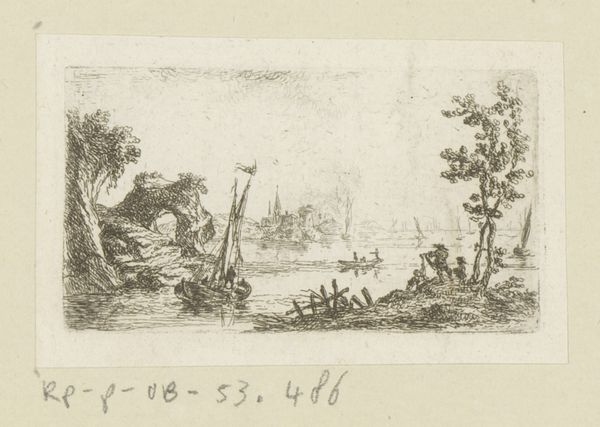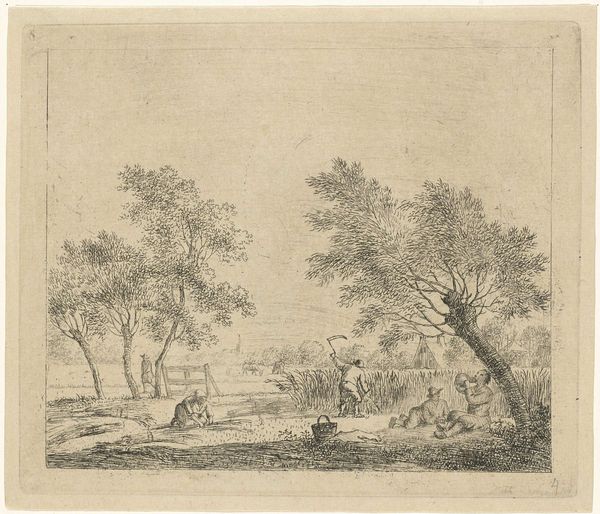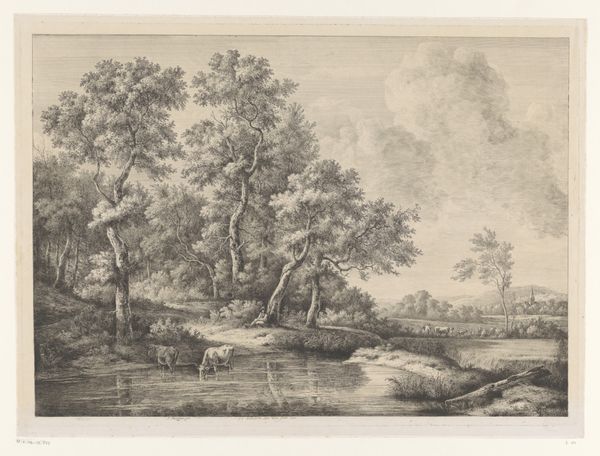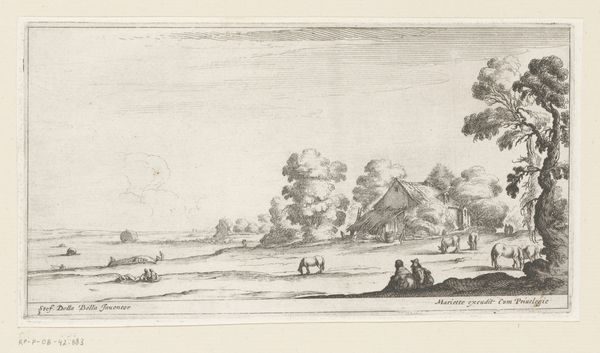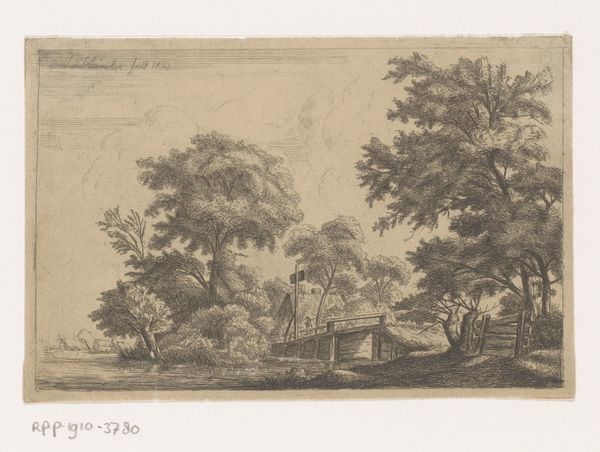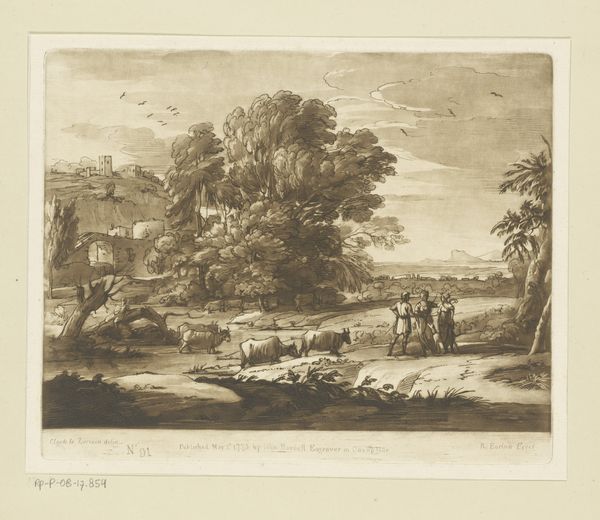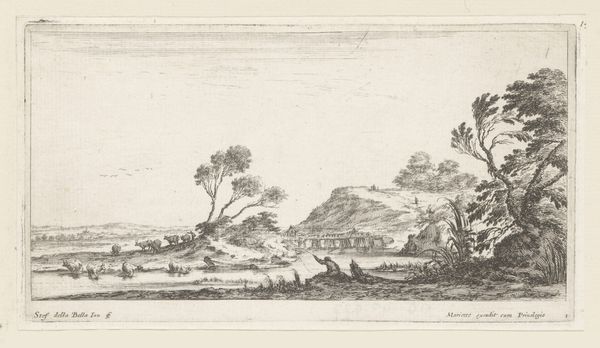
print, engraving
#
aged paper
#
toned paper
#
light pencil work
#
baroque
# print
#
pencil sketch
#
old engraving style
#
sketch book
#
landscape
#
personal sketchbook
#
sketchwork
#
line
#
sketchbook drawing
#
sketchbook art
#
engraving
#
realism
Dimensions: height 71 mm, width 85 mm
Copyright: Rijks Museum: Open Domain
Quentin Pierre Chedel created this landscape with an island and a fence along a path as an etching. Chedel lived in an era defined by Enlightenment ideals, where reason and observation were increasingly valued. This is beautifully reflected in the meticulous detail of the landscape, a clear attempt to capture the natural world with precision. Yet, what does it mean to frame nature? The fence suggests boundaries, a human imposition on the land. It's hard not to consider the socio-economic factors at play here. Landscapes were often commissioned or created by the wealthy, reflecting their ownership and control over land. Does this serene image subtly reinforce a social hierarchy, where nature is both admired and possessed? Does the artist challenge or reinforce existing power structures?
Comments
No comments
Be the first to comment and join the conversation on the ultimate creative platform.
